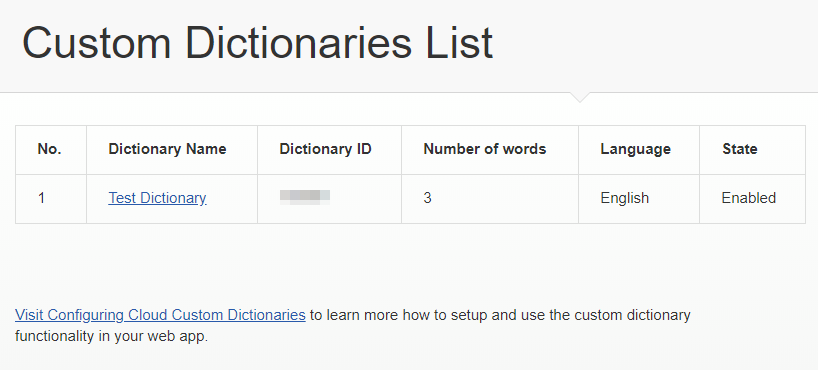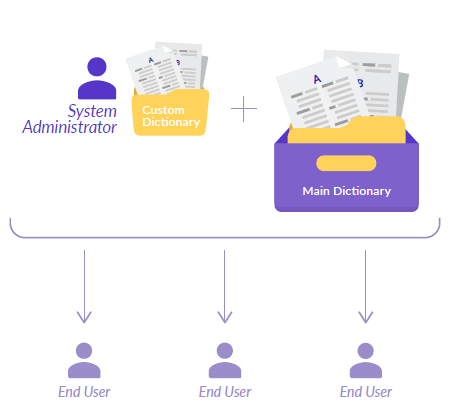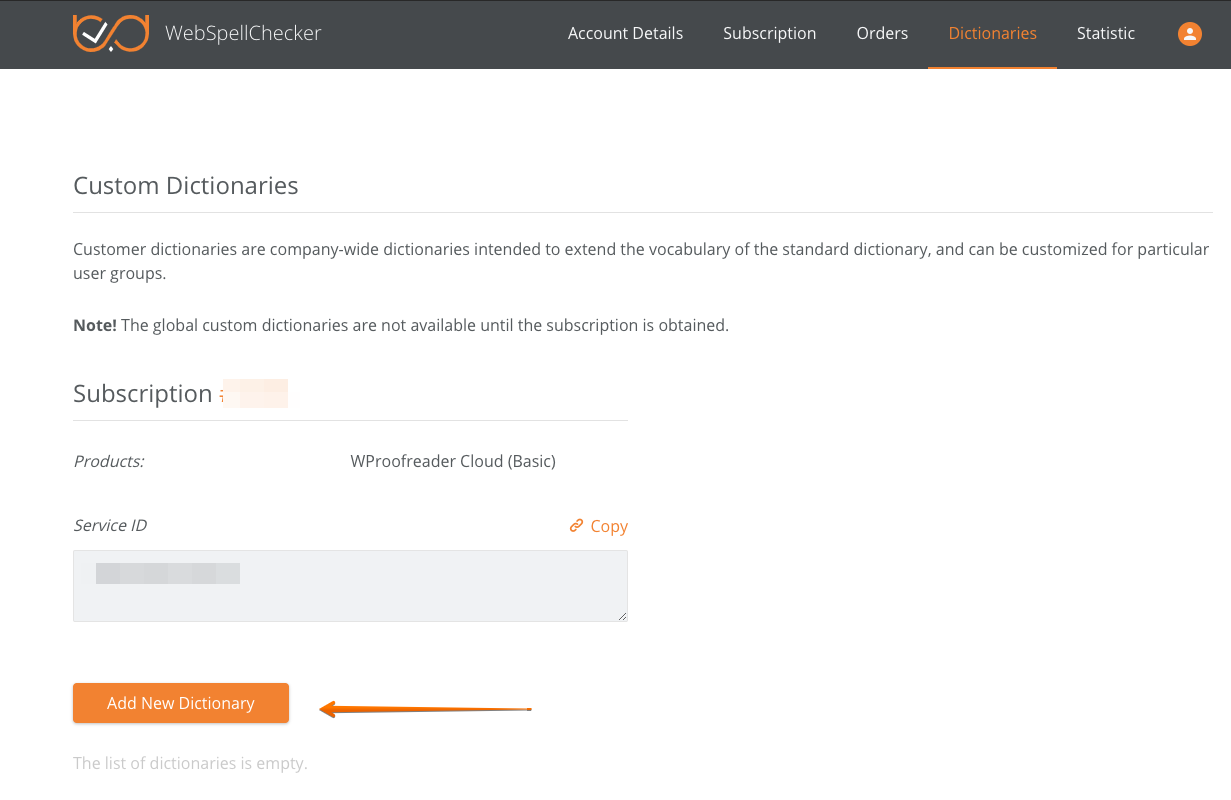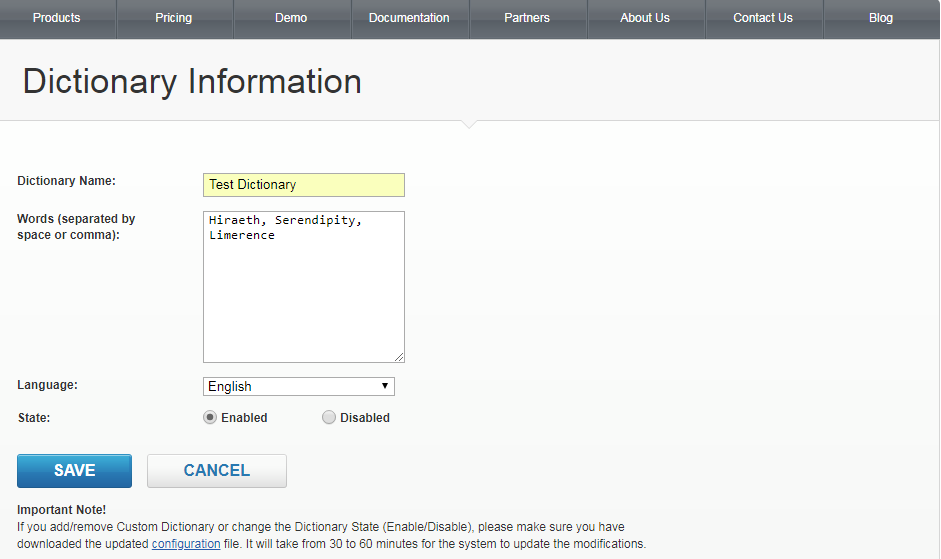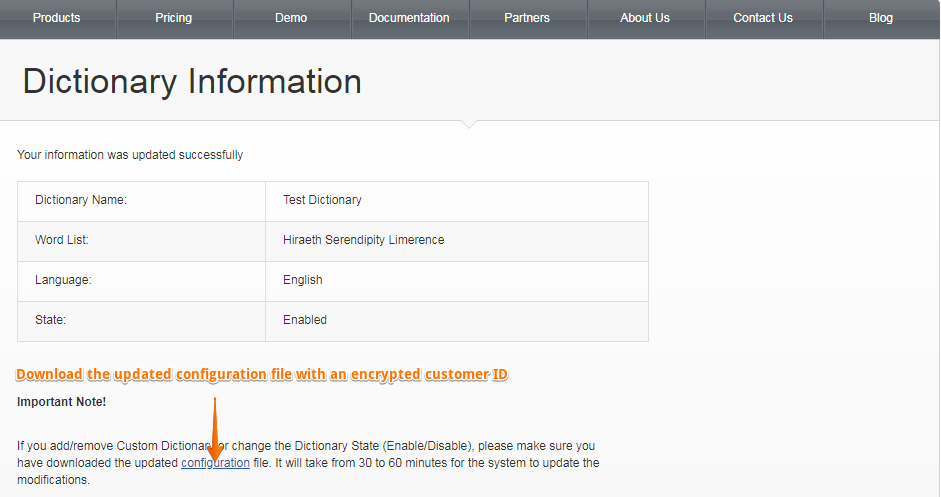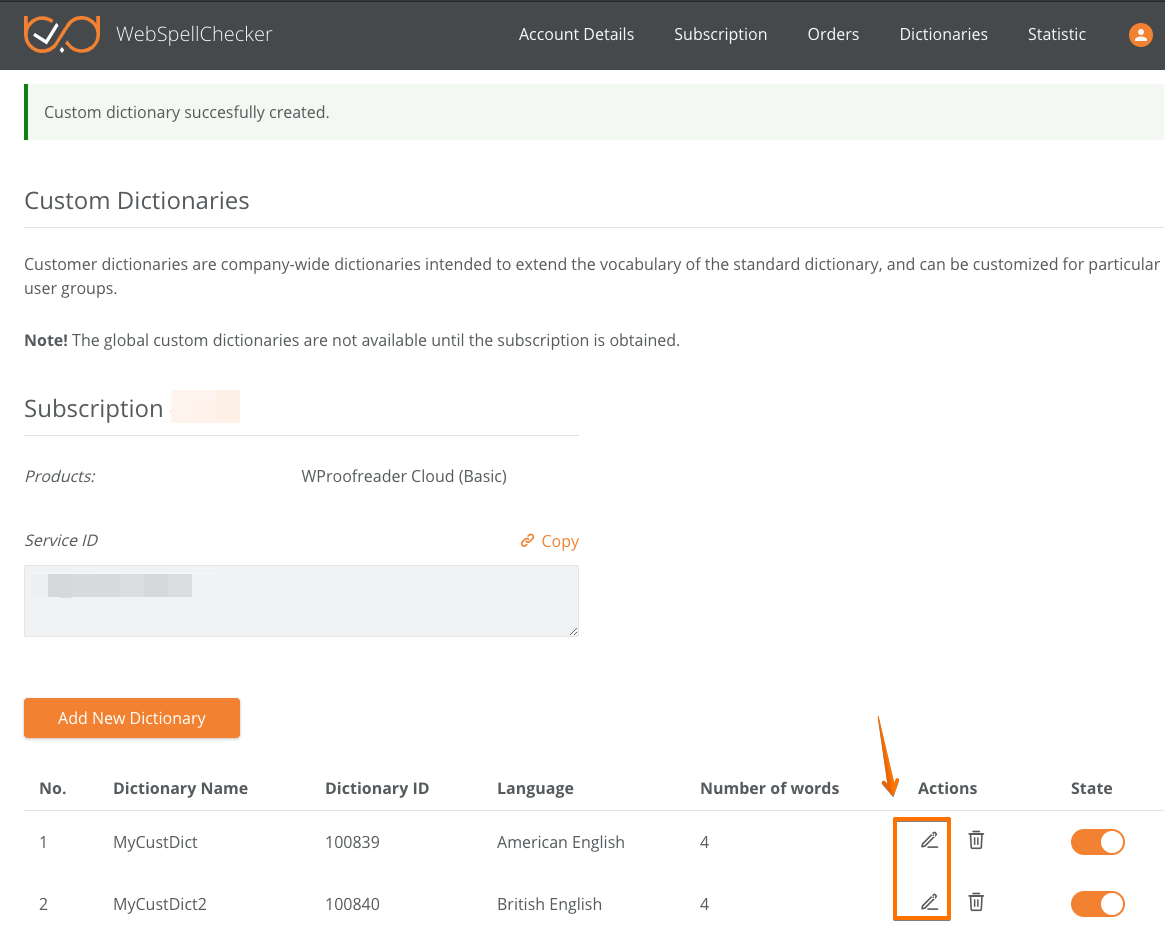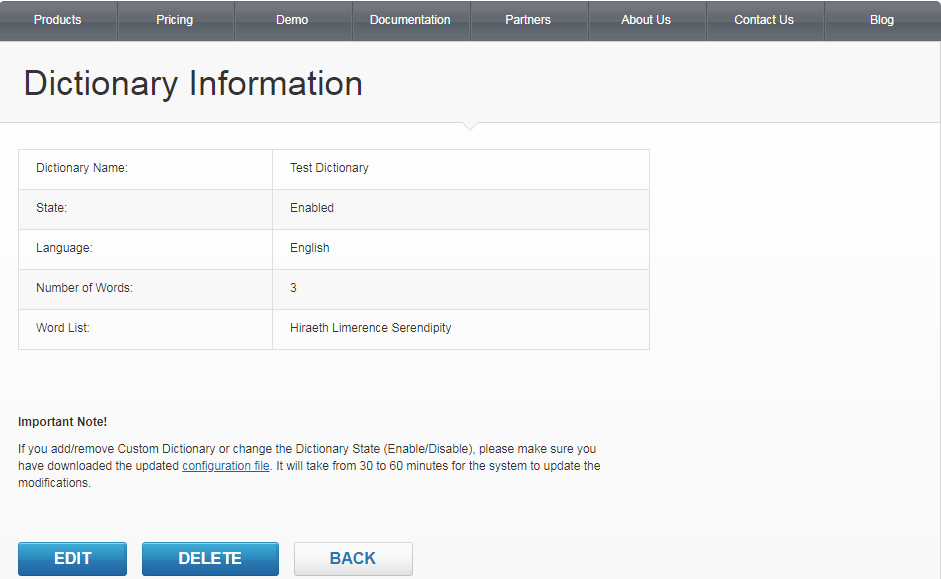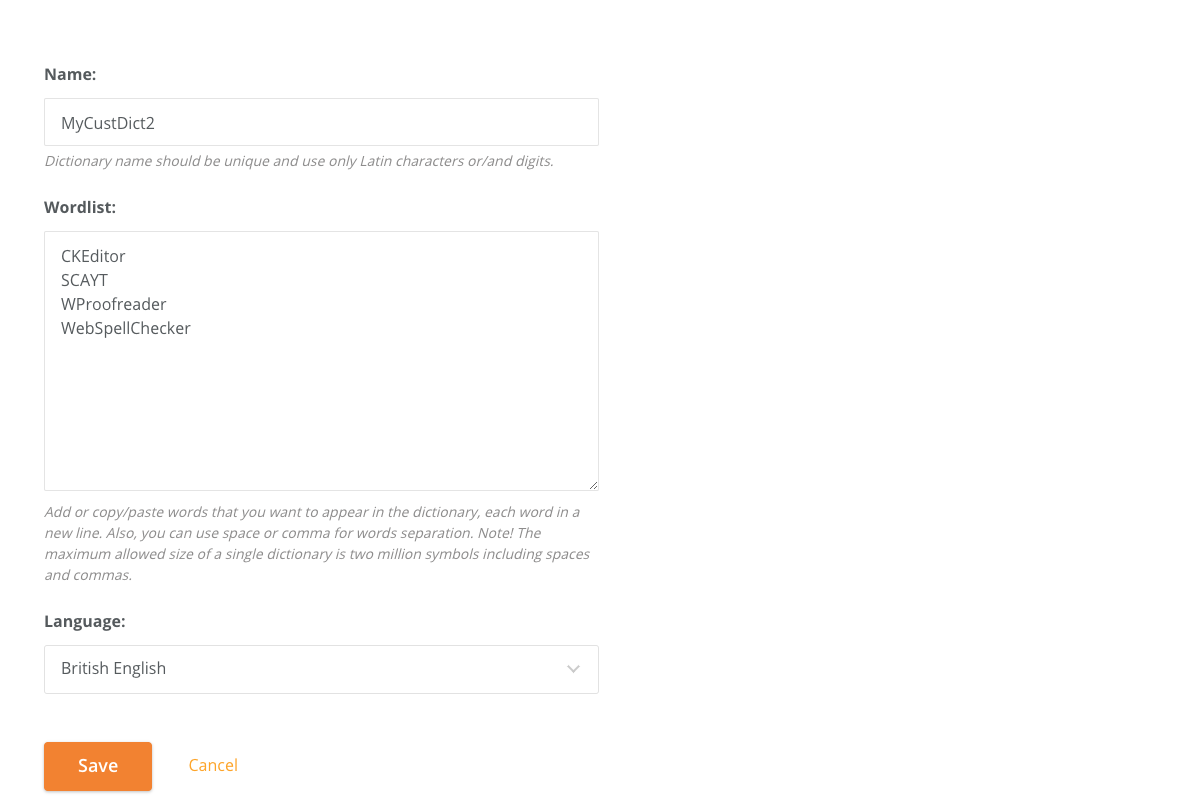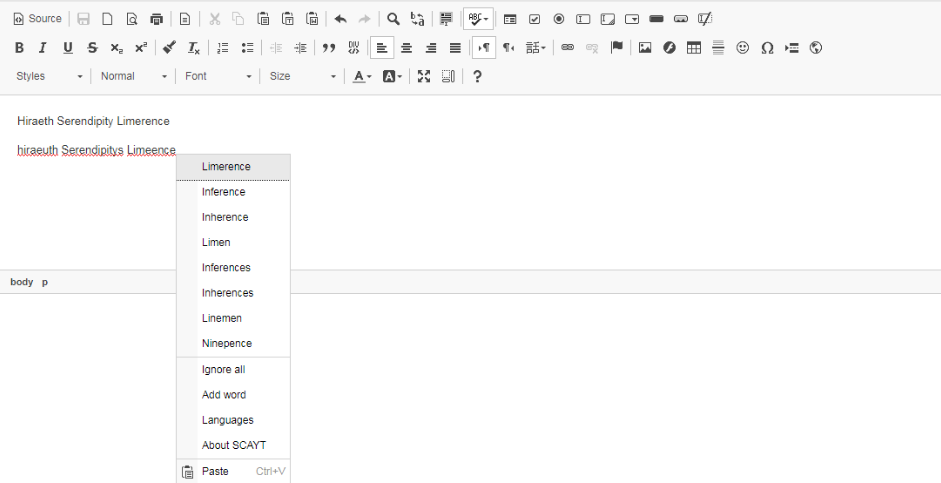Page History
2. Availability
Custom dictionaries are available for all customers who
have either trial or paid subscription to WebSpellChecker Cloud
Services.
| Tip |
|---|
Good to know: |
|
|
|
|
|
|
|
|
|
3.
Getting started with custom dictionaries
To
get started with the custom dictionary functionality
:
| Excerpt Include | ||||||
|---|---|---|---|---|---|---|
|
- Locate the Dictionaries section on the main page of your account
- and add a new dictionary. As soon as new dictionary is added, it will be displayed on the list of your custom dictionaries.
4. Create
custom dictionary
4.1.
Navigate to the Dictionaries
tab.
4.2. Under your subscription section, click Add New Dictionary button to create a new dictionary.
4.
3. Fill in all the necessary fields to create a new custom dictionary and click
Create.
- Type a dictionary name (the dictionary name should be unique and use only Latin characters or/and digits);
- Add or copy/paste the words separated by space or comma that you want to appear in the dictionary.
| Note |
|---|
Each unit in a dictionary is a separate word which can contain language-specific letters and digits. Don't use any specific symbols (e.g. math symbols) in the dictionary as it will fail to compile and won't work eventually. |
- Select a language to apply a new custom dictionary for. The words from this custom dictionary will be used to extend the default wordlist of a chosen language dictionary.
| Anchor | ||
|---|---|---|
|
|
4. Apply the changes made to the service configuration on your web page or a web app.
| Note |
|---|
Let us remind that the information about custom dictionaries is encoded in an encrypted customer ID key. If you add a new custom dictionary, or delete an existing one or just change the language or state of a dictionary from Enabled to Disable or vice versa, it changes the information about custom dictionary(ies), and an encrypted customer ID key accordingly. Thus, in order to apply your changes, you are required to obtain the latest version of your encrypted customer ID and update the old key in your configuration with a new one. |
- Download a new configuration file (config.ini) which contains your regenerated encrypted customer ID key.
| Tip |
|---|
There are several options how you can do it:
|
- Update your current encrypted customer ID with a new one in the service configuration on your web page or web app.
4.4. Verify the work of custom dictionary functionality.
| Note |
|---|
Usually it takes up 30 minutes for such changes to go into effect on the WebSpellChecker Cloud servers. |
- Once the dictionary is created, a unique dictionary ID will be assigned to your custom dictionary as shown below.
| Excerpt | ||||||
|---|---|---|---|---|---|---|
|
| Code Block | ||||||
|---|---|---|---|---|---|---|
| ||||||
<script type="text/javascript" data-wsc-autosearch="true" src="http://svc.webspellchecker.net/spellcheck31/wscbundle/wscbundle.js"></script>
<script>
window.WEBSPELLCHECKER_CONFIG = {
serviceId: 'your-service-ID',
lang: 'en_US',
customDictionaryIds: '100839'
};
</script> |
4.4. Verify if the custom dictionary functionality works correctly:
- Before trying to test a new custom dictionary, it is strongly recommended to clean your browser cache.
- Go to your web page and enter a sentence or a list of words that have been added
- to a new custom dictionary. The words that are present in your custom dictionary should be considered as correct. Moreover, if you try to misspell any of these words,
- you should get
- the correct word as a suggestion for correction in the list of suggestions.
5. Edit
custom dictionary
5.1.
To edit a custom dictionary, navigate to the Dictionaries section and
5.2. Select the
, under your subscription section, select a dictionary you want to
edit (Actions –> Edit icon).
5.
2. Modify the required fields (e.g. add new words)
and click Save.
| Note |
|---|
There is no need to regenerate your encrypted customer ID in the next cases:
If none of these applies, the update of your encrypted customer ID is required in to apply changes. |
6. Delete Custom Dictionary
6.1. Go6. Delete custom dictionary
- Navigate to the Dictionaries section and
- select your subscription. Go to the list of
- the dictionaries under this subscription.
6.2. 6.3.
- Select the dictionary you want to delete
- . Click the Delete icon.
- Apply the changes made to the service configuration on your web page or web app (see more details
- in section 4.3
- )
7. Verify Work of Custom Dictionary
Once all the changes are made, and required time for the changes to take effect passed, make sure that your custom dictionary works as expected- .
7.1. Open a web page with enabled one of the WebSpellChecker products.
7.2. In the editable field, enter a sentence or just a list of words that were added a dictionary. Those words won't be underlined as incorrect. Moreover, if you try to make a spelling mistake in any of the words, in the list of corrections you should be suggested the word from your custom dictionary.
